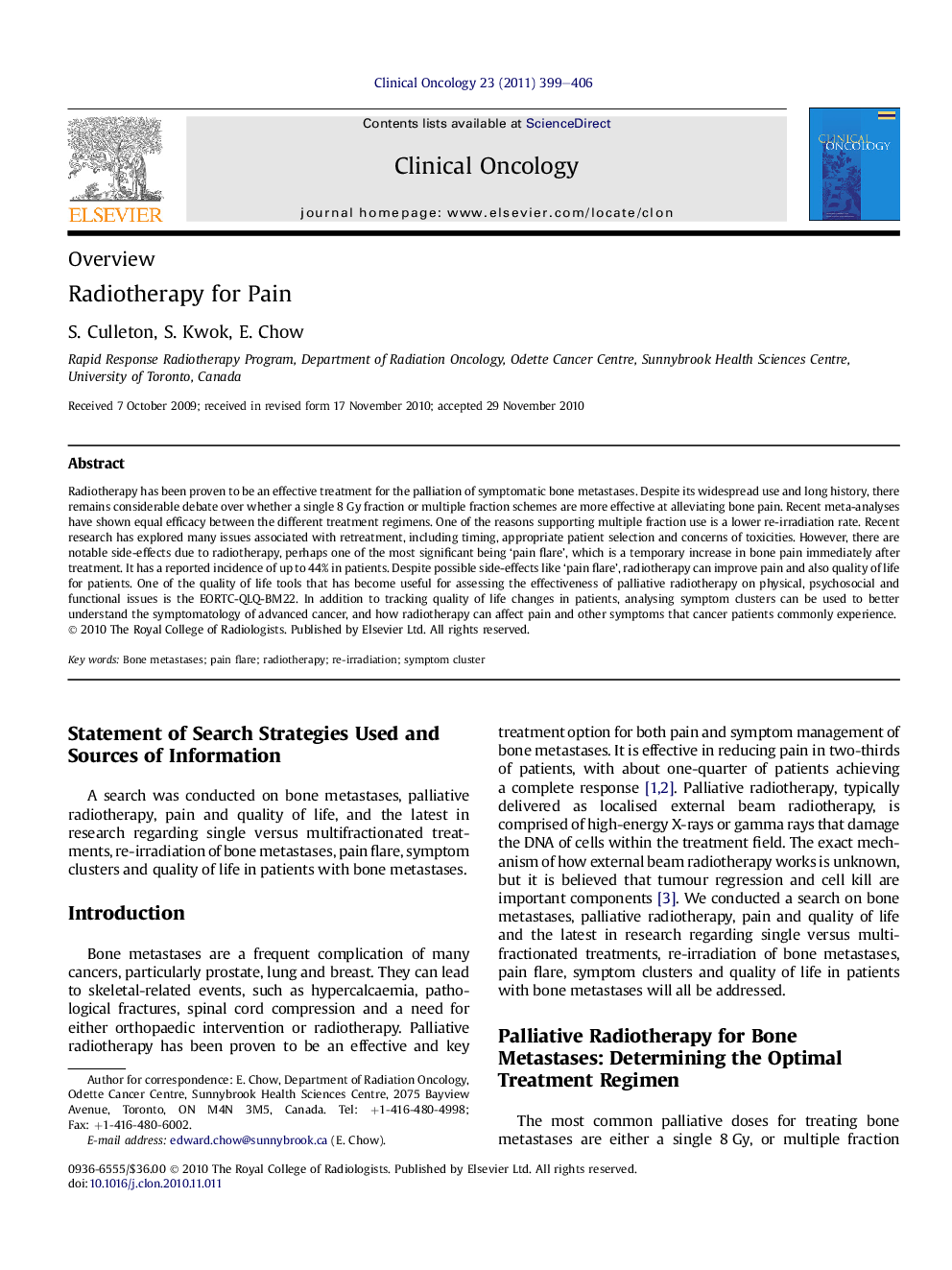| Article ID | Journal | Published Year | Pages | File Type |
|---|---|---|---|---|
| 5698745 | Clinical Oncology | 2011 | 8 Pages |
Abstract
Radiotherapy has been proven to be an effective treatment for the palliation of symptomatic bone metastases. Despite its widespread use and long history, there remains considerable debate over whether a single 8Â Gy fraction or multiple fraction schemes are more effective at alleviating bone pain. Recent meta-analyses have shown equal efficacy between the different treatment regimens. One of the reasons supporting multiple fraction use is a lower re-irradiation rate. Recent research has explored many issues associated with retreatment, including timing, appropriate patient selection and concerns of toxicities. However, there are notable side-effects due to radiotherapy, perhaps one of the most significant being 'pain flare', which is a temporary increase in bone pain immediately after treatment. It has a reported incidence of up to 44% in patients. Despite possible side-effects like 'pain flare', radiotherapy can improve pain and also quality of life for patients. One of the quality of life tools that has become useful for assessing the effectiveness of palliative radiotherapy on physical, psychosocial and functional issues is the EORTC-QLQ-BM22. In addition to tracking quality of life changes in patients, analysing symptom clusters can be used to better understand the symptomatology of advanced cancer, and how radiotherapy can affect pain and other symptoms that cancer patients commonly experience.
Related Topics
Health Sciences
Medicine and Dentistry
Oncology
Authors
S. Culleton, S. Kwok, E. Chow,
